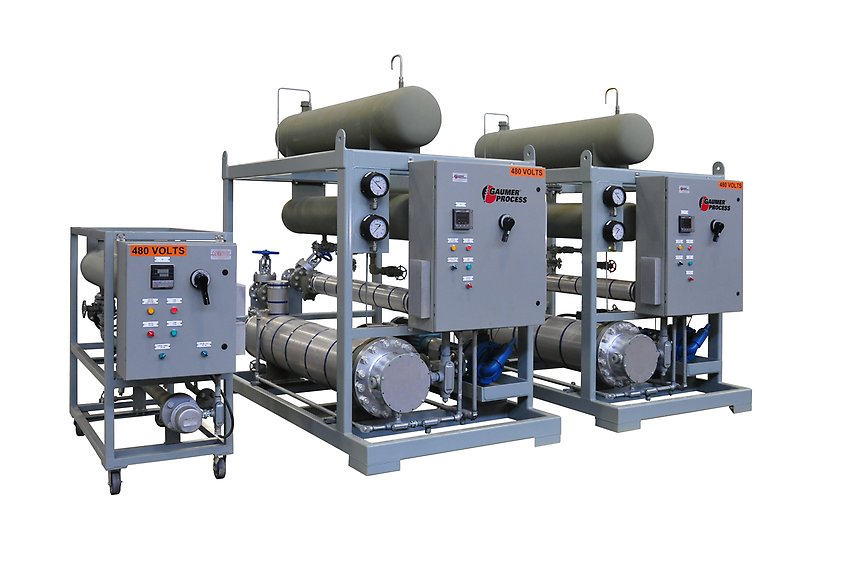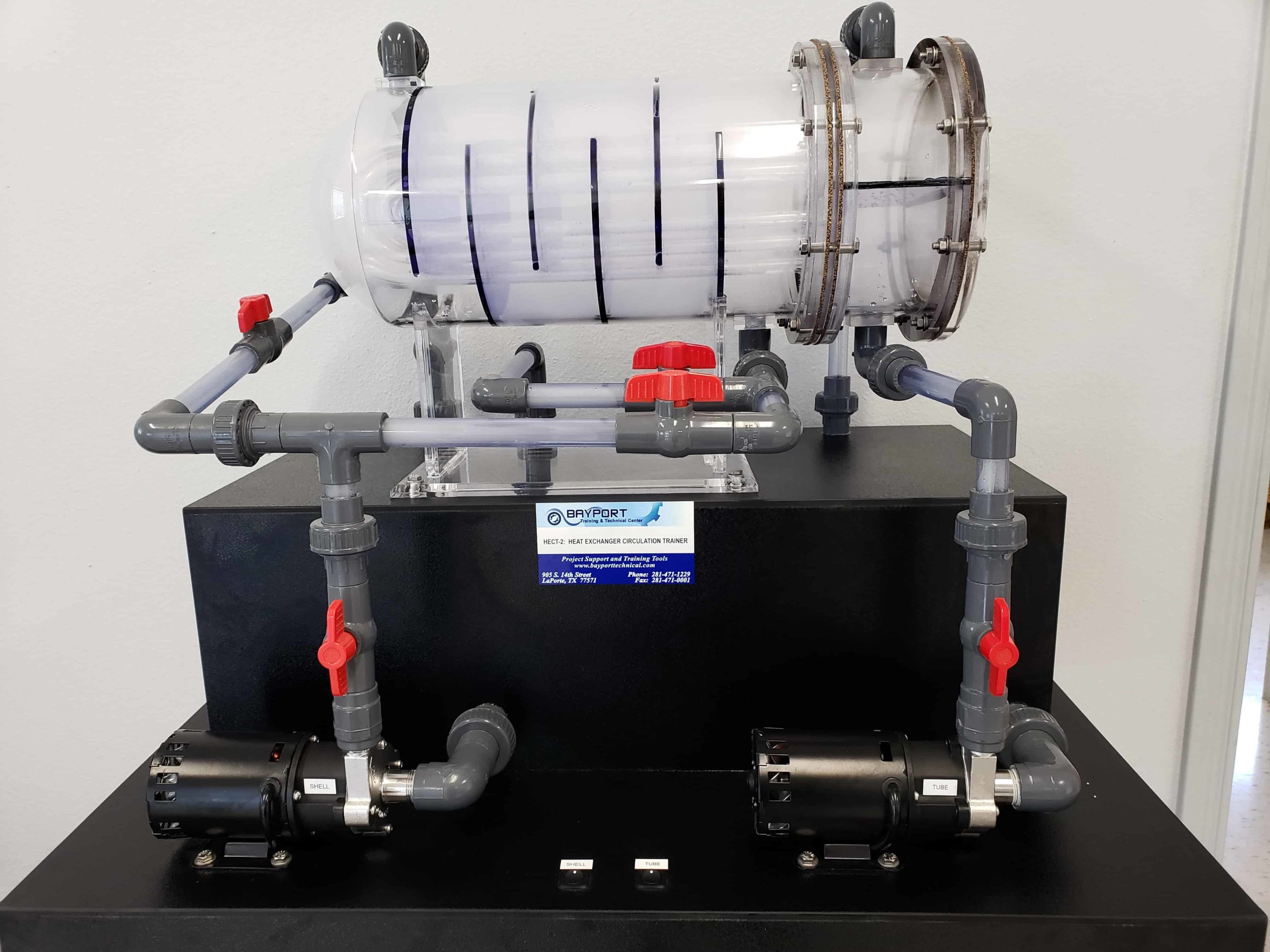The Duty of Heat Transfer Solutions in Sustainable Energy Solutions for the Future
Heat transfer systems are essential in the pursuit for lasting power options. They enhance thermal energy monitoring, boosting the efficiency of renewable innovations. By employing systems like conduction, convection, and radiation, these systems minimize energy losses. Their role in solar thermal and geothermal applications is especially substantial. As technologies emerge, the potential for additional developments elevates crucial questions concerning future energy strategies. What advancements will form the landscape of lasting energy?
Comprehending Heat Transfer Equipments

The Relevance of Thermal Power Management
Efficient thermal energy administration is important for taking full advantage of energy effectiveness and reducing waste in different systems. By controling temperature level and enhancing Heat transfer procedures, organizations can substantially reduce power usage and functional prices. Effective administration entails the implementation of sophisticated modern technologies and practices that monitor and control thermal problems within systems, ensuring that energy sources are made use of successfully. On top of that, appropriate thermal power management adds to reducing greenhouse gas discharges, aligning with worldwide sustainability goals. It additionally improves system reliability and performance, causing enhanced product high quality and longer devices life expectancy. Inevitably, focusing on thermal power monitoring is a vital step towards creating more sustainable energy options and cultivating a liable technique to power usage in commercial and household contexts.
Applications of Heat Transfer in Renewable Resource
While various renewable energy sources promise sustainability, the reliable application of Heat transfer plays a crucial duty in their performance. In wind power systems, Heat transfer is made use of for turbine element air conditioning, improving efficiency and longevity. Geothermal energy relies upon efficient Heat exchange between the planet's subsurface and the liquid flowing in the system, taking full advantage of power extraction. Biomass power procedures additionally take advantage of Heat transfer, as it assists in converting organic materials into usable gas via pyrolysis and gasification. In addition, in hydropower, preserving perfect temperatures in storage tanks can improve power outcome. Each of these applications demonstrates the essential significance of Heat transfer systems in enhancing renewable energy innovations, eventually contributing to an extra sustainable power future.
Enhancing Solar Thermal Power Efficiency
As solar thermal power systems remain to progress, enhancing their performance has ended up being essential for optimizing energy result. Breakthroughs in Heat transfer modern technologies, such as boosted thermal storage space products and ingenious Heat exchangers, play a significant function in boosting efficiency. By utilizing innovative materials that have remarkable thermal conductivity, systems can capture and move Heat more efficiently. Additionally, integrating radar that comply with the sunlight's course guarantees that collection agencies get excellent solar exposure throughout the day. Utilizing nanotechnology in solar absorbers can further raise power absorption rates. Additionally, integrating computerized control systems aids take care of and regulate temperatures energy distribution successfully, causing decreased losses and boosted general system effectiveness. These enhancements lead the way for even more lasting solar thermal power options in the future.
Geothermal Heating: A Lasting Option
Geothermal home heating provides a viable alternative for lasting energy, offering substantial ecological benefits through reduced greenhouse gas emissions. Its efficiency and cost-effectiveness make it an attractive choice to typical heating unit. Nonetheless, obstacles connected to application should be addressed to optimize its possible effect.
Ecological Advantages of Geothermal
Typical heating techniques add substantially to greenhouse gas emissions, geothermal home heating offers an engaging choice that reduces ecological effect. By harnessing the Earth's inner Heat, geothermal systems utilize a renewable energy source, significantly lowering reliance on fossil fuels. This technique creates minimal carbon discharges, making it a cleaner option for commercial and domestic home heating. In addition, geothermal systems promote power efficiency, as they require less energy compared to standard furnace. DVS Heat Transfer Systems. The utilization of geothermal energy also helps in decreasing air pollution, improving neighborhood air top quality and public wellness. As a lasting remedy, geothermal home heating sustains environment adjustment reduction initiatives, placing itself as an important element in the shift towards a greener future
Efficiency and Cost-Effectiveness
How does geothermal heating measure up in regards to performance and cost-effectiveness contrasted to typical home heating systems? Geothermal home heating demonstrates remarkable effectiveness, commonly accomplishing a coefficient of performance (COP) of 3 to 5, meaning it creates 3 to 5 units of Heat for each system of electrical energy eaten. This performance equates into reduced operating prices, particularly in areas with steady geothermal resources. First installation costs can be greater than traditional systems; however, long-term financial savings on energy expenses and decreased upkeep expenditures can balance out these upfront financial investments. Furthermore, lots of governments incentivize geothermal systems via discounts and tax credit ratings, boosting their cost-effectiveness. Overall, geothermal heating arises as a economically sensible and sustainable choice to more traditional home heating services.
Implementation Obstacles and Solutions
Various challenges can restrain the prevalent implementation of geothermal heater, in spite of their clear benefits as a sustainable energy option. High initial setup prices typically discourage home owners and investors, making funding a significant obstacle. Additionally, the geographical restrictions of ideal geothermal sites restrict access in certain regions. Neighborhood guidelines and allowing processes can also complicate job growth, causing delays. Furthermore, public awareness and understanding of geothermal systems remain low, impeding acceptance. To deal with these challenges, targeted education campaigns can improve public understanding, while federal government motivations can alleviate financial concerns. Working together with local authorities to enhance regulations might promote smoother project approvals, ultimately promoting the adoption of geothermal heating as a viable, lasting energy choice.
Innovations in Heat Transfer Technologies
Innovations in Heat transfer technologies play a crucial function in improving energy efficiency and sustainability. Advanced Heat exchangers and stage change products go to the center of these developments, offering considerable renovations in thermal management. These technologies not just optimize energy usage but also add to reducing environmental impact in numerous applications.
Advanced Heat Exchangers
Advanced Heat exchangers play an essential duty in improving energy performance across numerous applications in lasting energy solutions. These tools assist in the transfer of Heat in article source between two or even more fluids, considerably reducing power consumption in procedures such as industrial home heating, cooling, and power generation. Innovations in products and design, such as using nanofluids and compact arrangements, have led to improved thermal performance and reduced size demands. In addition, improvements in electronic surveillance and control systems allow for maximized operation, additional increasing performance. By minimizing waste Heat and making best use of energy healing, advanced Heat exchangers add to lower carbon impacts and support the shift towards environmentally friendly modern technologies. Their continued advancement is vital for accomplishing international power sustainability goals.
Phase Modification Materials
The integration of stage modification materials (PCMs) right into Heat transfer innovations represents a considerable innovation in energy management and effectiveness. PCMs absorb and release thermal power throughout their phase adjustments, allowing efficient temperature level regulation in building products and power systems. By storing excess Heat during top periods and launching it when need increases, PCMs contribute to load shifting and energy conservation - DVS Heat Transfer Systems. This capacity enhances the performance of renewable resource systems, particularly in solar thermal applications. Additionally, PCMs can improve the thermal comfort of indoor atmospheres, minimizing dependence on traditional home heating and cooling approaches. As advancements in PCM formulas remain to emerge, their role in lasting power options is positioned to grow, offering encouraging opportunities for future research and application

Future Leads for Heat Transfer in Sustainable Energy
As the demand see here for sustainable energy services remains to rise, the duty of Heat transfer systems is coming to be significantly important fit future technologies. Developments in materials and layouts are expected to enhance effectiveness in Heat transfer, lowering power losses in numerous applications. The integration of advanced thermal storage systems, such as phase adjustment products and thermochemical storage space, will certainly make it possible for better management of energy resources. Research into nanofluids and biomimetic Heat exchangers may further enhance thermal performance. The adoption of smart technologies will certainly enable for real-time tracking and adaptive control of Heat transfer processes. These advancements are poised to significantly add to the general efficiency and sustainability of power systems, paving the way for a much more energy-efficient future.
Frequently Asked Questions
Just How Can People Carry Out Heat Transfer Systems in your home?

People can execute Heat transfer systems in the house by setting up energy-efficient appliances, utilizing radiant heat, and enhancing insulation. These measures enhance power efficiency, minimize costs, and advertise sustainable techniques in domestic settings.

What Are the Prices Associated With Installing Heat Transfer Systems?
The costs connected with installing Heat transfer systems differ commonly, usually encompassing tools, installment labor, and upkeep. Variables such as system type, home size, and local policies considerably affect the general expense entailed.
Exist Government Incentives for Heat Transfer System Installations?
Government incentives for Heat transfer system installations vary by area and can consist of tax gives, rebates, and credit ratings. These economic benefits intend to encourage adoption, inevitably advertising energy effectiveness and decreasing ecological effect within areas.
Just How Do Heat Transfer Equipments Effect Power Expenses?
Heat transfer systems significantly affect energy costs by optimizing power efficiency. By boosting the transfer of Heat, these systems minimize energy usage, leading to lower energy costs and developing a more lasting approach to power management.
What Maintenance Is Needed for Heat Transfer Equipments?
Maintenance for Heat transfer systems consists of normal assessments, cleaning of elements, examining liquid degrees, ensuring proper insulation, and replacing worn parts. These tasks aid maintain efficiency, stop breakdowns, and extend the system's functional life-span.
These systems assist in the motion of thermal energy from one tool to another, enabling the transfer of Heat for cooling, energy, or More hints home heating generation objectives. Geothermal power relies on effective Heat exchange between the planet's subsurface and the liquid flowing in the system, optimizing power removal. Furthermore, geothermal systems promote energy efficiency, as they require less power contrasted to standard home heating systems. Advanced Heat exchangers play a necessary duty in improving energy performance throughout different applications in lasting power solutions. Heat transfer systems notably influence energy bills by optimizing power effectiveness.